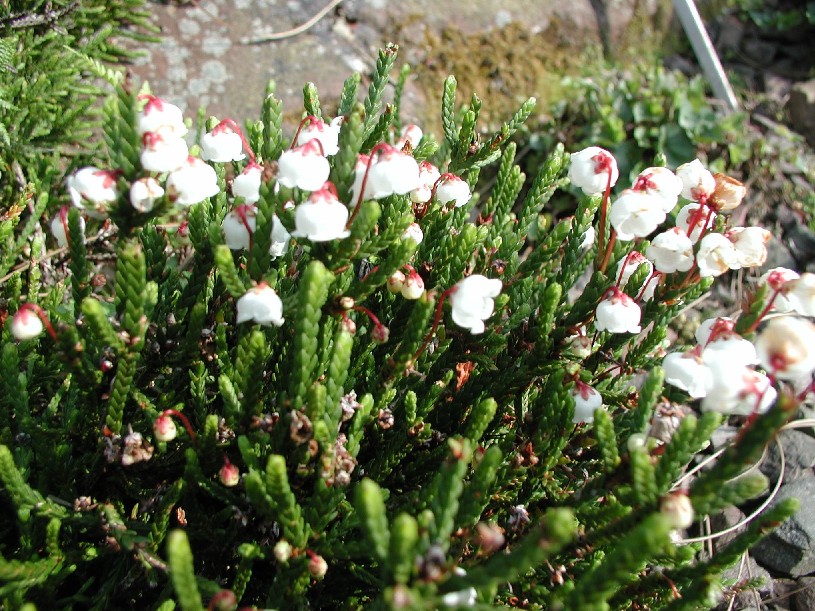Cassiopoideae
Cassiopoideae |
Cassiopoideae
|
| Within Clade 1, the sister-group relationship of Cassiope and Ericoideae is well supported. The monophyly of Cassiope (11 spp.) is supported by several homoplasious characters, i.e., Calluna-type pith (char.#8), lack of bud scales (char. #9), decussate leaves (char. #11), fibers absent or poorly developed in leaf midrib (char. #19), and reduced axillary inflorescences (char. #29). It is noteworthy that axillary inflorescences are very uncommon in Clade 1 (Ericoideae + Cassiope), occurring more commonly in Vaccinioideae (Fig. 12). Ericoid leaves (char. # 13) may be an additional apomorphy of Cassiope, but such leaves commonly occur within Clade 1 (Fig. 13). It is also possible (although less parsimonious) to assume that ericoid leaves evolved in the common ancestor of Clade 1 or even in the common ancestor of the core Ericaceae, but the ericoid leaf of Cassiope differs in morphology from that of Calluna and other ericoid members of Ericoideae (Stevens 1970). A distinctive synapomorphy of the species of Cassiope, which was not included in our analyses, is the bisporic embryo sac. Cassiope is the only member of the Ericaceae known to have other than a Polygonum type embryo sac (Palser, 1952). The unusual fasciculate hairs may also be synapomorphic. |
Cassiopoideae
|
| Cassiopoideae Kron & Judd,
stat. nov. – Type genus: Cassiope D. Don Cassiopeae H. T. Cox ex Stevens, Bot. J. Linn. Soc. 64: 37. 1971. Low shrubs, stem lacking pericyclic sheath of fibers, with Calluna-type pith, evergreen, with decussate, small, ericoid, auriculate leaves, revolute (or convolute?) in bud. Leaf epidermal cells not lignified. Indumentum of fasciculate-branched and small glandular hairs. Inflorescence axillary, one-flowered, the flower with 4—6 basal bracteoles; calyx articulated with pedicel. Flowers (4-)5-merous, actinomorphic. Calyx lobes ± moderate-sized, ± deciduous; corolla sympetalous, ± campanulate, the lobes moderately large; stamens (8-)10, included, the filaments ± straight, unicellular-pubescent or smooth; anthers inverting early in development, roughened, with a pair of dorso-apical spurs at (or just above) junction with filament, lacking a fibrous endothecium, with or without a white deposit of disintegration tissue dorsally, dehiscing by terminal, slit-like pores. Pollen in tetrads, without viscin threads. Ovary (4-)5-locular, with axile placentation, superior; style impressed; stigma truncate. Fruit a loculicidal capsule; seeds with elongate testa cells; embryo with 2 cotyledons. |
Distribution Map of Cassiopoideae throughout the World |
 |
back to homepage |